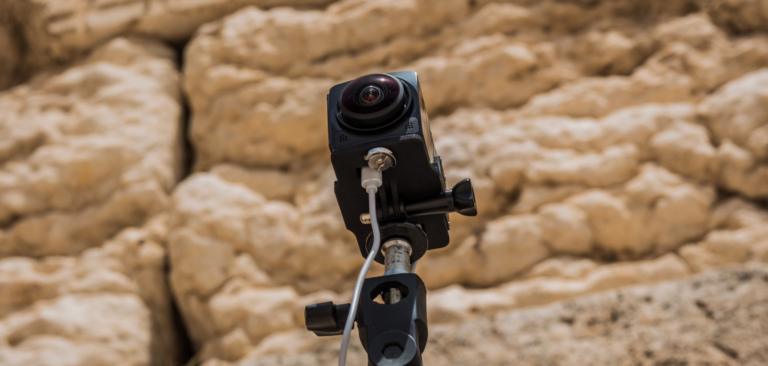5 Tips to Create Winning 360 Videos for Your E-commerce Business

According to one recent study, 58% of internet users prefer to see a 360 video of your products. Before investing the time to learn how to create winning 360 videos for your e-commerce business, however, you probably want to know if 360 videos can improve brand recognition, increase viewer engagement and boost product sales.
The Experiment: Google and Columbia Sportswear Test the Power of 360-Videos
Think with Google decided to test the power of 360 videos to raise viewer engagement. Partnering with Columbia Sportswear, Google created two versions of the same ad—one traditional, the other 360—which featured U.S. Olympic skiers plying their skills in the Chilean mountains. The results were clear: the 360 video outperformed the traditional format in virtually every important viewer metric. As Jim Habig, Product Marketing Manager for YouTube, explains:
“The 360 ad trounced the standard ad on all the earned action metrics, including views, shares, and subscribes. In total, the 360 ad drove 41% more earned actions than the standard ad. It also drove more engagement with Columbia’s YouTube channel than the standard ad.”
That’s Great—But How Can I Make 360 Video Work for My E-commerce Business?
Bringing any new technology to your e-commerce platform requires that you first understand how it works, and how it can best move prospective customers to buy your products. That’s as true for a 360 video as for a new design of product pages or enhanced functionality for your shopping cart.
Here are 5 tips to create 360 videos that give customers the experience they want and drive sales results:
1. Create a smart plan: with traditional video shoots, you can make necessary edits and corrections in post-production. In filming a 360 video, you don’t have the same ability to correct mistakes you made during the shoot. That means you need to plan more carefully than you would for a traditional shoot. Take the time to craft a careful plan which takes into account every aspect of your shoot—then rehearse and re-rehearse to avoid costly mistakes.
2. Find the sweet spot for camera placement: where you place your 360-camera will determine your viewer’s point of view, so it’s important you place your camera for maximum impact. If you want your viewer to be a participant (as opposed to an observer) in your video, make sure to place your camera at the same eye level he/she would have in real life.
3. Hide or disguise lighting elements: in a traditional video, lighting elements are easy to hide — basically any location that’s not in the angle of your camera. In a 360 video, those lighting elements will be observable unless you find a way to hide or disguise them. You could, for example, disguise lighting as decorative elements or hide them somewhere in the scene.
4. Assume every element of set design will be viewed: no matter how careful you are to direct the viewer’s eye where you want it to be, some viewers will get distracted by other elements on your set. Make sure that, no matter where viewers focus their attention, they’ll remain engaged by visually-interesting set elements. Avoid complex patterns in wallpaper, tiles, carpeting and artwork on walls (if you’re filming indoors) — these can complicate your efforts to stitch your video together in post-production.
5. Chill out: especially if this is your first foray into 360 video, there will be times when you question your every decision, which can lead to stress, which can compromise the quality of your final product. Remember, 360 video is virgin territory for just about everyone, which means just about everyone makes mistakes. Usually, those mistakes aren’t fatal. Keep in mind that most viewers are also new to 360 video — the medium is so engaging that they’ll likely forgive any minor imperfections.
The bottom line: The study referenced above showed that 58% of internet users prefer to see a 360 video of your products. In addition to providing current and potential customers more of what they want, using 36 video is more likely to increase brand recognition, viewer engagement and sales. It’s a win for everyone!



